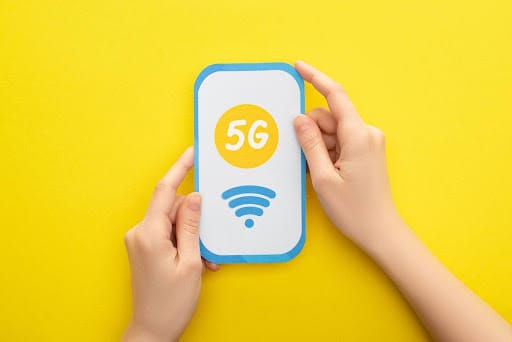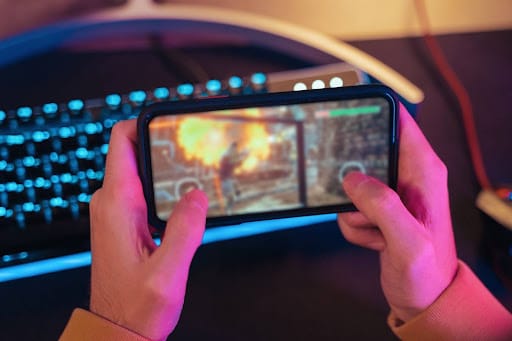Understanding the Role of 5G in Enhancing Mixed Reality Experiences
Mixed Reality (MR) offers immersive and interactive experiences that blend physical and digital worlds. However, MR’s full potential is dependent on robust connectivity solutions, and this is where 5G plays a significant role. By providing faster speeds, lower latency and greater capacity, 5G networks address the technical limitations of previous generations, making Mixed Reality experiences more seamless, accessible and impactful.
This content delves into how 5G enhances Mixed Reality, its implications for businesses and strategies for leveraging these technologies to drive innovation and engagement.
Enabling Seamless Mixed Reality Performance with 5G
The limitations of current connectivity solutions often constrain the performance of Mixed Reality applications. 5G’s capabilities eliminate many of these barriers, enabling richer and more fluid Mixed Reality experiences.

Ultra Low Latency
Latency—the time it takes for data to travel between devices and servers is critical for Mixed Reality applications. High latency can disrupt the immersive experience, causing delays in rendering or interaction. With 5G, latency is reduced to milliseconds, allowing for:
Real-time interactions in Mixed Reality environments.
Smooth hand tracking, object manipulation, and voice commands.
Faster Data Transmission
Mixed Reality applications generate and transmit massive amounts of data, from 3D visuals to real-time analytics. 5G’s increased bandwidth ensures:
High-resolution rendering without buffering or delays.
Instant streaming of Mixed Reality content, even in data-intensive scenarios.
Enhanced Mobility
Unlike Wi-Fi, 5G provides consistent connectivity across larger areas, enabling Mixed Reality experiences to move beyond stationary setups to mobile and outdoor environments.
Connectivity Feature | Impact on Mixed Reality Performance |
Low Latency | Real-time interactions |
High Bandwidth | High-resolution, lag-free experiences |
Wide Coverage | Mobility for outdoor and large-scale applications |
The convergence of 5G and Mixed Reality is driving innovation across various industries, enabling applications that were previously unfeasible.
Marketing and Advertising
5G enhances Mixed Reality’s ability to create engaging and interactive campaigns:
Live Mixed Reality events that adapt to user behavior in real time.
Seamless integration of Mixed Reality ads into mobile and public environments.
Retail and E-Commerce
With 5G, retailers can provide:
Virtual try-ons with instant rendering of products.
Immersive shopping experiences in physical stores or through mobile devices.
Healthcare and Training
The reduced latency and high reliability of 5G allow:
Real-time surgical simulations and remote medical training.
Interactive, data-driven skill-building scenarios in various fields.
Entertainment and Gaming

5G brings MR gaming and entertainment to a new level by enabling:
Multiplayer MR games with minimal lag.
Large-scale interactive experiences, such as concerts or sports events.
Industry | Application of 5G-Powered MR |
Marketing/Advertising | Live, interactive campaigns |
Retail/E-Commerce | Instant virtual try-ons |
Healthcare/Training | Real-time simulations |
Entertainment/Gaming | Lag-free multiplayer experiences |
Overcoming Challenges in Mixed Reality with 5G
While 5G solves many technical issues, adopting it for Mixed Reality experiences presents new challenges. Businesses must strategically address these to unlock its full potential.
Infrastructure and Deployment
5G infrastructure is still expanding globally, and businesses may face challenges such as:
Limited availability in certain regions.
High costs of integrating 5G networks into existing setups.
Device Compatibility
Not all Mixed Reality devices are 5G-ready. Businesses must ensure compatibility to deliver consistent experiences across devices.
Data Privacy and Security
The increased data transmission enabled by 5G raises concerns about privacy and security. Robust data protection measures must be implemented to maintain user trust.
Challenge | Solution |
Limited Infrastructure | Partner with 5G-ready platforms |
Device Compatibility | Invest in 5G-compatible MR devices |
Data Security Concerns | Implement robust encryption and compliance standards |
Maximizing ROI with 5G and Mixed Reality Integration
To leverage the combined power of 5G and Mixed Reality effectively, businesses must adopt a strategic approach that focuses on measurable outcomes.
Prioritize Scalable Applications
Focus on Mixed Reality applications that can scale with 5G’s capabilities, such as virtual retail environments or live interactive events.
Use Analytics for Optimization
Real-time analytics enabled by 5G help businesses monitor user behavior and optimize MR experiences to maximize engagement.
Collaborate with Technology Leaders
Platforms like Flam simplify the integration of 5G and Mixed Reality by providing scalable solutions and advanced analytics for tracking performance.
Flam’s Role in Enabling 5G-Powered Mixed Reality
Flam is at the forefront of Mixed Reality innovation, empowering businesses to create seamless and scalable MR experiences powered by 5G.
Flam’s MR solutions eliminate the need for app downloads, leveraging 5G to deliver smooth, browser-based experiences.
Real-time insights help businesses optimize MR campaigns and measure ROI effectively.
From marketing to training, Flam supports diverse use cases for 5G-enabled MR.
Final Thoughts
5G is unlocking the true potential of Mixed Reality by providing the speed, capacity, and reliability needed to deliver immersive and interactive experiences at scale. From enabling real-time interactions to supporting data-intensive applications, 5G is a game-changer for MR adoption across industries.
Platforms like Flam are paving the way for businesses to harness this synergy, offering tools that simplify deployment and optimize performance. By integrating 5G with Mixed Reality, businesses can create innovative campaigns and applications that drive engagement, loyalty, and growth in the evolving digital landscape.
FAQs
How does 5G improve Mixed Reality experiences?
5G reduces latency, increases data transmission speeds, and enables Mixed Reality experiences to operate seamlessly across mobile and large-scale environments.
What industries benefit most from 5G-powered Mixed Reality?
Industries like marketing, retail, healthcare, and gaming can leverage 5G for more immersive and interactive Mixed Reality applications.
How can businesses measure the success of 5G-enabled MR campaigns?
Metrics such as engagement rates, time spent in the experience, and conversion rates provide insights into campaign success.
Does 5G make Mixed Reality more accessible to mobile users?
Yes, 5G enables high-quality Mixed Reality experiences on mobile devices, making MR campaigns more accessible and scalable.
What are the cost implications of adopting 5G for MR?
While initial costs may be high, the scalability and improved performance of 5G can deliver significant long-term ROI.
How does 5G enhance collaboration in MR environments?
5G supports real-time data sharing and interaction, enabling seamless collaboration in shared virtual spaces.
Can 5G be used for outdoor MR applications?
Yes, 5G’s wide coverage and mobility make it ideal for outdoor MR applications, such as public installations and large-scale events.
Is 5G secure for data-intensive MR applications?
With proper encryption and compliance measures, 5G networks can securely handle the high data transmission needs of MR.
How does Flam help businesses adopt 5G for MR?
Flam provides scalable, 5G-enabled MR solutions with tools for seamless deployment, real-time analytics, and cross-industry applications.
Comments
Your comment has been submitted successfully!